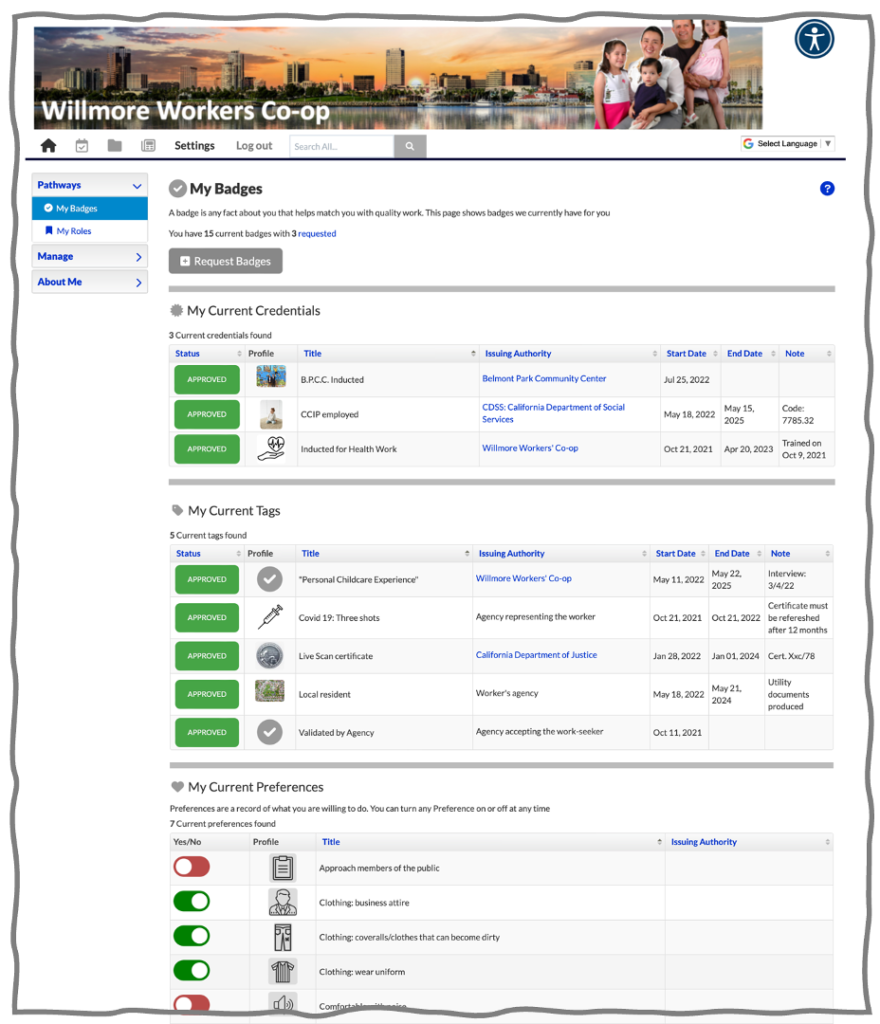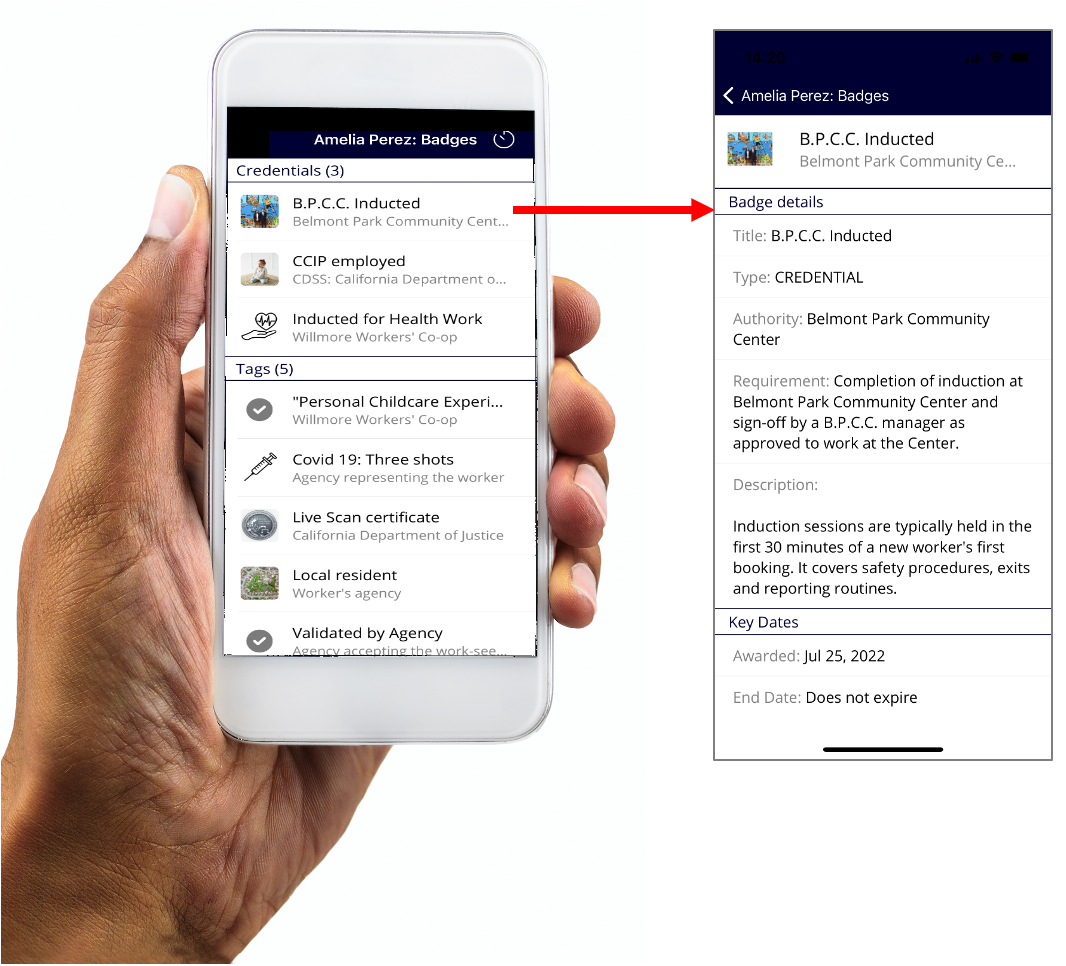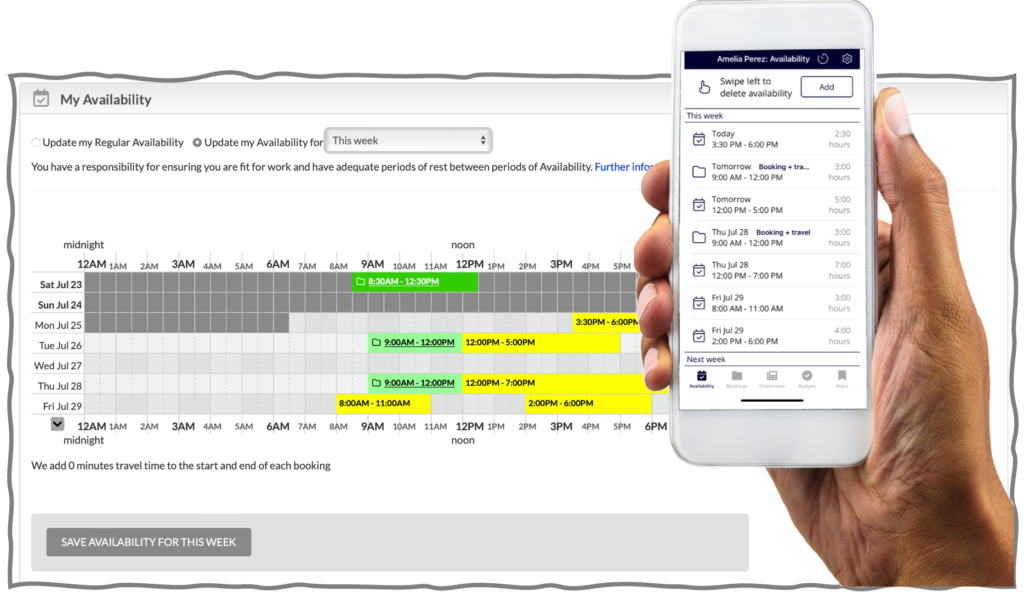 Meet Amelia. She’s a grandparent, a carer for her husband and a volunteer in her community. She needs to work around these commitments.
Meet Amelia. She’s a grandparent, a carer for her husband and a volunteer in her community. She needs to work around these commitments.
Good gig work
Amelia lives in an area where agencies have collaborated to launch a citywide platform for hourly labor.
Four weeks ago, Amelia entered that market through a local workers’ co-operative which has the platform as part of their website. It is branded for them, uses their terminology, and enforces their rules on top of all legal controls. (To protect private, all people and organizations on this page are fictitious.)
The co-op have a mark-up built into the rate paid by anyone buying her time, so they want to see her working as much as she wants for the highest possible rate. The mark-up also funds her benefits, insurance, and support while covering the co-ops’ overheads and payrolling costs.
Once a co-op staffer approved Amelia for work, she can access the platform through her phone or the web. It immediately needed to know two key things about her:
1) What work can she do?
The cornerstone of Amelia’s opportunity is a set of badges. A badge confirms any datapoint that could help her get quality work, or track her outcomes. There are statewide badges, city-specific badges, even badges specific to one business or public agency.

Badges fall into three strands:
 Credentials: Any certification held by the individual as a result of training. (e.g.: Has mobile crane operator certifcation, is a certified Home Care Aide, has completed Walmart checkout operator training).
Credentials: Any certification held by the individual as a result of training. (e.g.: Has mobile crane operator certifcation, is a certified Home Care Aide, has completed Walmart checkout operator training).- Tags: Any verified fact about the worker that could make them additionally attractive to buyers, or attract support, or be useful in reporting their outcomes but which they did not have to undergo training to achieve (e.g.: registered disabled, full time student, lone parent).
- Preferences: What the person is or isn’t willing to do. (e.g.: Work Outdoors, Wear a uniform, Lift Loads up to 20lbs.)
From Amelia’s badges, the system analyses which roles she can be offered. A role is a type of work, like babysitter, bricklayer, or barista. Again, roles can be systemwide, specific to the city, or unique to one business, agency or household. Some roles have fixed payrates set by the client, others allow the worker to determine the payrate for which they will work (more on this below).
2) When does she want to work?
Workers can have a pattern of regular availability each week, or constantly change their times based on uncertain lives. Amelia combines the two; she broadly has certain times free each week, but shortens or extends them as family commitments and social obligations develop day-to-day.

The grid shows her pattern for this week. A dark green booking is one that recurs ever week. The platform constantly tries to get her ongoing, predictable, assignments with clients who she likes. Light green blocks show a shorter booking.
 Getting a booking
Getting a booking
The co-op has businesses, households, and public agencies among its clients. As they need labor, the platform shows who is qualified, willing and available to do that work and at what total cost. Amelia has built relationships with several clients who book her constantly.
The CEDAH can text her or email her. She is only contacted when it has a booking, within all her rules, and the client has committed to pay. This platform doesn’t bombard workers with messages, forcing them to scrabble in competition with each other, for each period of work. We expect clients and workers to get to know and trust each other.
Once she confirms, she can use the platform’s tools on her phone to clock in and out for the work. This ensures a legal record of her exact hours, protecting against wage theft.
Advanced features
As Amelia got used to the platform, the co-op encouraged her to personalize her options. For example, she’s decided she’s happy to work at short notice or on short length bookings for new clients, but only if she gets the extra money she demands.

She worked for one household and felt they treated her badly. She’s told the platform she will only work there again if she gets $25 an hour. The bad client is finding costs of workers rising as others do the same.

Amelia has a growing list of options, her verified list of activity creates a powerful record showing reliability, adaptability, and on-going learning. It’s invaluable if she has a job interview or wants to progress to full time work through the platform’s tools (see next page).


